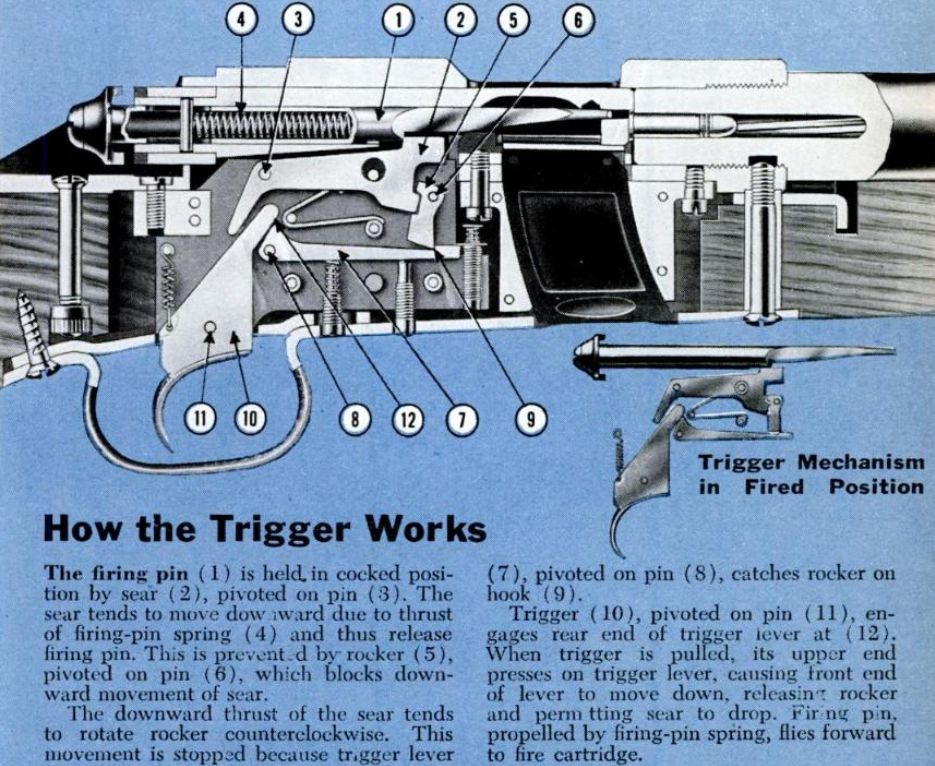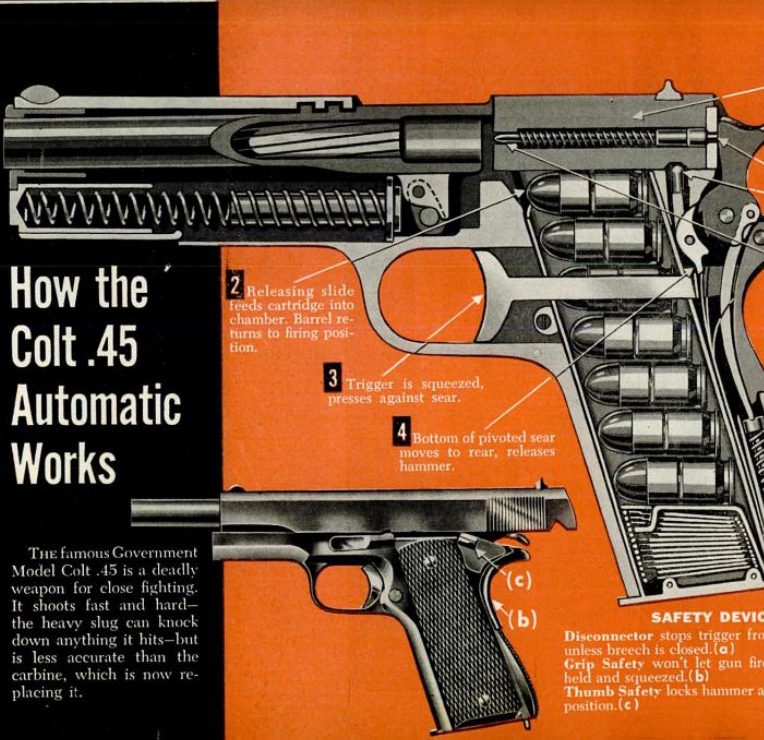Even a .22 rifle has a complicated trigger mechanism. This one, a Winchester Model 52 from 1951, is timeless. You’ll find essentially the same mechanism on rifles today.
Click to Enlarge to 935 x 766 px:

Source: Popular Science November 1951

This cutaway of the classic Colt .45 Automatic was part of Popular Science’s “Know Your Weapons” series that started up in 1951. This series was aimed squarely at WWII (and even WWI) veterans who had been intimately familiar with these military firearms only a few years before.
Click to Enlarge to 764 x 740 px:
Source: Popular Science October 1951
Firing .30 caliber cartridges, the Winchester M1 Carbine wasn’t intended to be the ultimate killing machine Rather, it was an intentionally lightweight piece for radiomen, cooks, officers, and others for whom a firefight wasn’t their main job.
Click to Enlarge to 756 x 740 px:
Source: Popular Science September 1951
The M1 Garand is a rifle with a storied reputation. Over 6.25 million of these .30 caliber shell-firing rifles were produced from 1936 to 1957.
This cutaway was published in 1951 to an audience of veterans who had been quite familiar with the Garand on tours of duty during both WWI and WWII.
Click to Enlarge to 756 x 740 px:
Source: Popular Science August 1951
It was an ugly little gun, and like the drawing’s text says, “cheap and easy to make.” That’s why the moniker “grease gun” was so appropriate.
The M3A1 had a stamped, riveted, and welded construction, which meant it was difficult if not impossible to work on, and was meant to be discarded if it ever became inoperable in the field. Over 15,000 of the M3A1 submachine guns were produced.
Click to Enlarge to 850 x 589 px:
Source: Popular Science July 1951